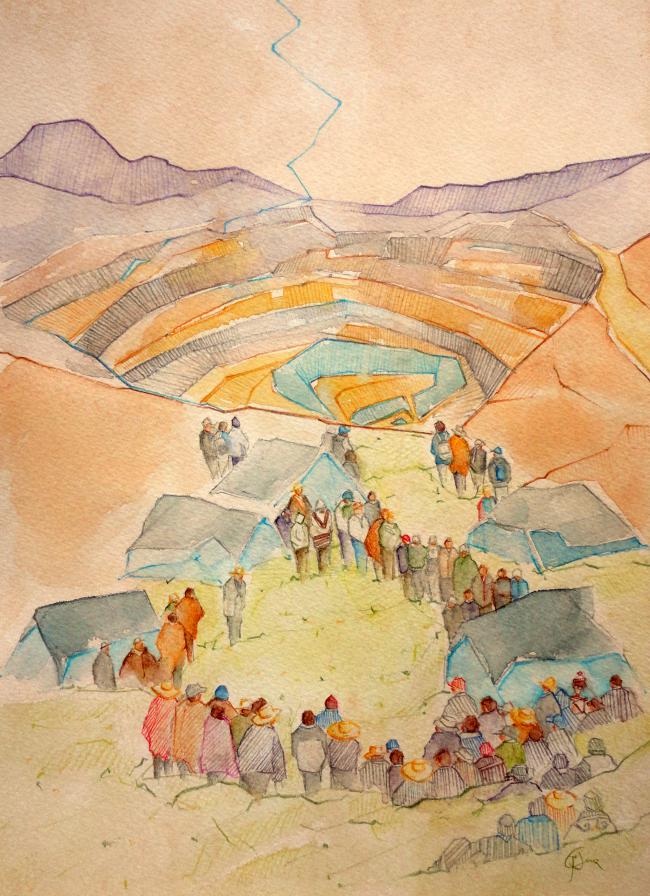
Over the past three years, the use of horizontalism to describe new social relationships under construction has proliferated—from the Movements of the Squares in Greece, Spain, and Turkey, to Occupy Wall Street, to subsequent formations throughout the United States. Many new activists have found this way of relating so empowering that there has been a near claim put on it, as if activists today had “invented” horizontalism. Similarly, movement participants speak of organizing without demands, but with goals and objectives—not looking to institutions of power for change but making it themselves, seeking autonomy from the state or other forms of institutional power (see Sitrin).
Many date these new organizational forms to the fall of the Berlin Wall in 1989, when the idea of building a revolutionary party to take state power started seeming less an option, for both global political reasons as well as collective emancipatory ones.
In Latin America, people and communities have been breaking with these past ways of organizing, and over the last 20 years, these movements have reported well-known victories. In the cases documented in this report, this organizing is being done outside of traditional venues for movement building, such as political parties or unions.
In Peru and Argentina, this horizontal organizing has resulted in a mass-movement to halt mega-extraction projects (see Zibechi). In Mexico, Zapatista communities have created bottom-up political and pedagogical models to self-organize outside of state order (see Esteva). In Bolivia, the water committees organize around local resource control (see Olivera). Each of these examples of emerging forms of political and social construction comes from a break with previous forms of organizing. But while a break, they also offer continuity—in many cases these “new” forms of organizing are revivals of age-old communitarian and indigenous practices, as addressed by Olivera, Esteva, and Zibechi.
While this report is able to shed light on horizontal and autonomous organizing practices in Latin America from a variety of angles, readers will note that it is our shortest themed report since we moved from stapling NACLA’s Latin America & Empire Report to binding it in 1970. These earlier reports sit stacked here in the office, leaving the smell of cellulose and lignin on your hands, threatening to wrest a cover from its staple or tear a Chiquita Banana satirical poster down the middle with each careful flip of a page.
As we balance the in-betweens of paper and screen, lignin and liquid crystal, we offer a reorientation of NACLA reporting. Over the years the NACLA Report has been in practice a contranym of sorts: both the name of our magazine and, distinctly, the name of our themed “report section.” It is the latter that we shorten for you today, so we can bring you another conventional use of the word “report” in verb form—to give accounts of things observed, heard, and done—with a greater diversity of content.
In this vein we bring you timely stories we wouldn’t have had the space to in editions past: We see widespread scapegoating of today’s influx of unaccompanied youth on the border (see Planas) alongside market dynamics that subject Latin America to economic instability (see Ray), which as we know contribute to migration “push” factors. We see El Salvador’s total abortion ban, whose most vocal opponents have faced a right-wing media attack since mid-summer (see Viterna) alongside creative tactics sex workers use in Ecuador to assert their rights as women and single mothers in the absence of written legislation to protect them (see Wilking)—and much more.
A quarterly magazine should not aim to compete with the Internet pace of reporting, but allow for broad coverage, with a breath here and there, as a respite from its necessary corollaries, the tweet and post. May you find what calls you to action in this edition, and we’ll meet you through screens and on the streets—and in the circles and squares—wherever you’ll join us.
— Marina Sitrin and Colette Perold
Read the rest of NACLA's 2014 Fall Issue: Horizontalism & Autonomy

